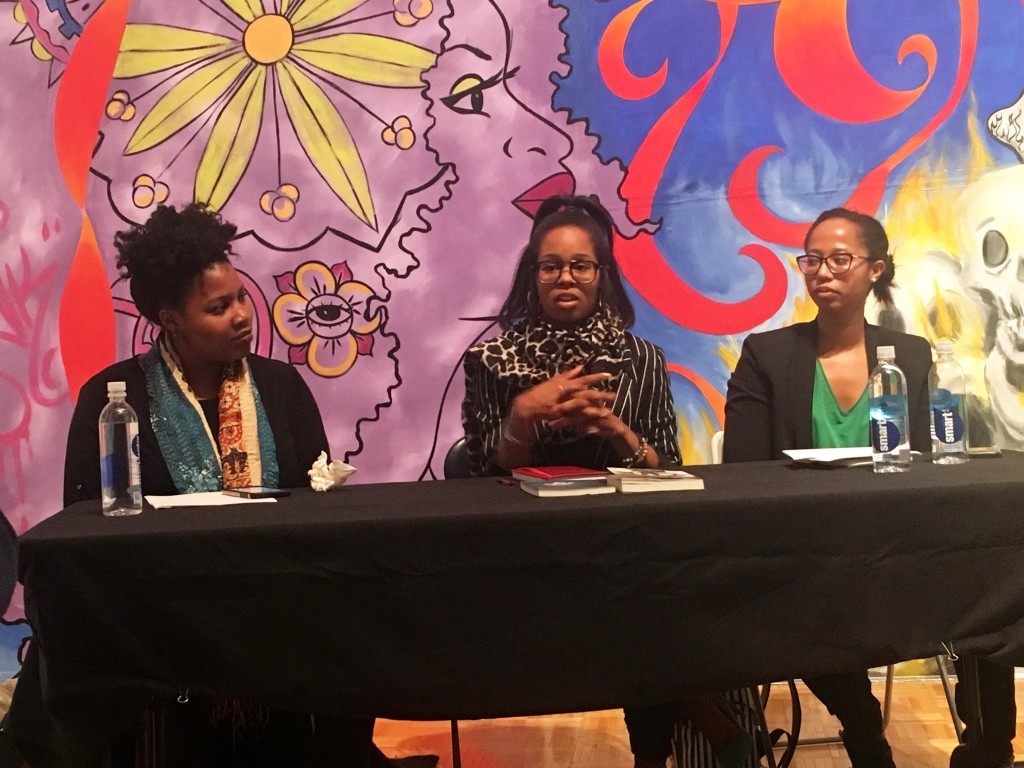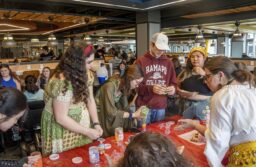As another installment of Ramapo’s “!!!Public Art???” series in the Berrie Center, academics Deshonay Dozier and Shamell Bell spoke on the subject of black protest art.
Both visiting scholars had explored different ways black communities used art as a form of protest throughout the years. Dozier’s work focuses on poetry during the War on Drugs era, and Bell spearheaded the use of street dance activism.
To begin the first presentation, Dozier welcomed the spirit of a community member who had passed, which Bell later recognized is common practice in many black communities. She went on to speak about and highlight the works of The Homeless Writers Coalition, who published four anthologies and a poetry album.
She then explored the six main themes she had found throughout these works. Though they focus on issues from their time – one of which is identified as the first main theme, crack – the poems resonate with issues of today.
Dozier compared her fourth main theme, “The City,” to today’s “minimization and criminalization of the opioid crisis” that exists in many gentrified areas of America. Her last theme, “Gangs” was written in symbols of red and blue in many poems.
“Leave these youth colorblind to the idea that they are all king,” she quoted from one poem by Russ. The topic of gangs was viewed as an issue to the Coalition.
However, Bell’s presentation had a different perspective on gangs and gang theory. One of Bell’s main philosophies is her rejection of respectability politics, which is why she rejects the negative connotation of the term “gang.”
Bell, too, opened her presentation with honoring an “ancestor” – in her case, the recently passed Nipsey Hussle. She also engaged the audience in standing up for a breathing exercise in order to fill the room with feelings of positivity.
With her work in street dance activism, Bell explored how movement and dance can be used to bring people of a community together in gangs, and create an “intersection between art and activism.”
“Dance has always been a way to resist the socioeconomic situation we’re in,” Bell said about black communities specifically. She spoke about her experiences growing up in South Central Los Angeles as well, showing just how close to home many of today’s issues are to her own life.
Her use of the word “gang” without apology for the negative reputation it may carry became the central idea of her presentation.
“I am alive because of gang theory,” she said. “I just chose to dance in a gang.”
The room was opened to questions when both presentations were finished, and one student asked a question about how protest may create discourse.
“There is room for all protest and righteous anger,” Bell answered. Bell was an original member of the Black Lives Matter movement and believes that there is no “right” form of protest.
Both of these scholarly women are passionate about their work, and brought perspective to the Public Art series at Ramapo. Shamell Bell will bring her street dance activism to a workshop on campus on Thursday at 1 p.m.
vdamico@rampo.edu
Photo by Tori D’Amico





